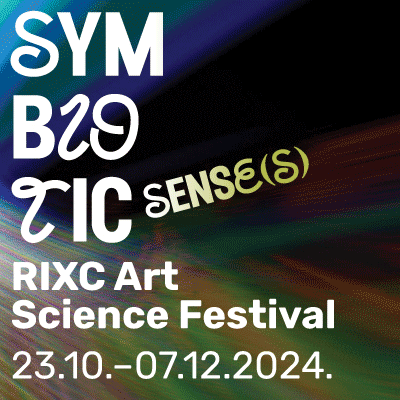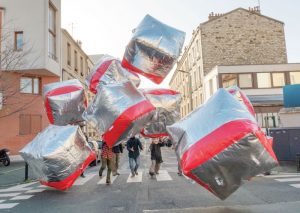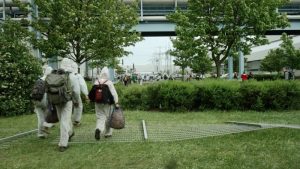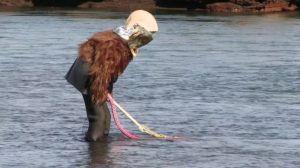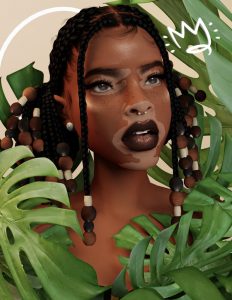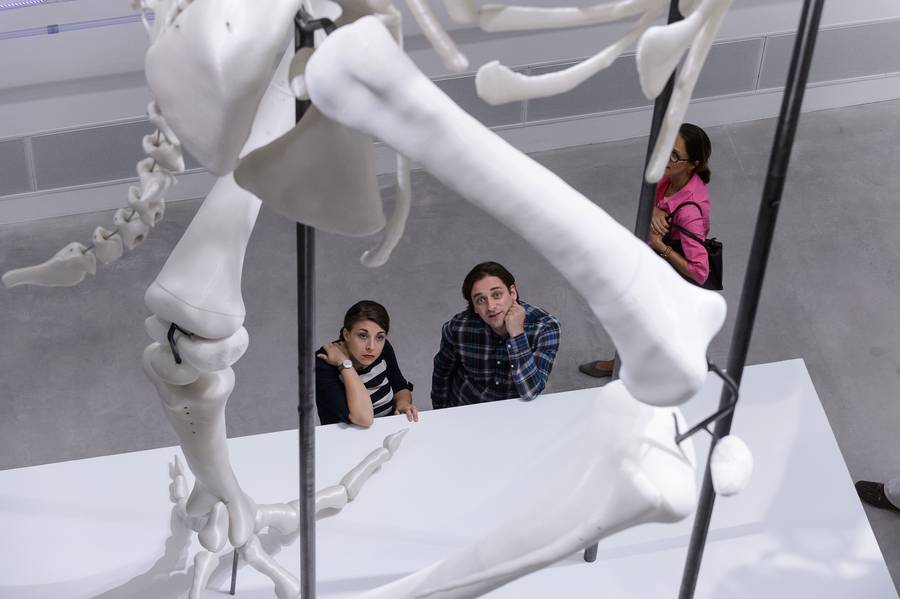
Andreas Greiner, Monument for the 308 (detail), 2016. Exhibition view of Andreas Greiner. Agentur des Exponenten. GASAG Kunstpreis 2016, Berlinische Galerie, 2016. Photo: Harry Schnitger
Andreas Greiner has built a monument to the humble broiler. A 7 meter high 3D printed version of a real chicken that had lived and died in a battery farm in Brandenburg, Germany. The artist then installed the giant sculpture inside the main hall of the Berlinische Galerie. I haven’t seen it yet but it looks poignant. It has the imposing presence of a dinosaur skeleton, the photogenic appeal of an instagram star but the mistrustful contours of a chicken that has never seen trees, grass or the light of a sunny day.
Not that i’ve ever seen any broiler chicken alive. I’m just assuming, extrapolating and letting my mind wander. Because Greiner’s work excels at triggering your imagination: he quietly lays in front of your eyes some visually stunning concepts and ideas, he never suffocates them with explanations but lets you ponder upon them and draw your own conclusions about what they say about our society, economy and culture.
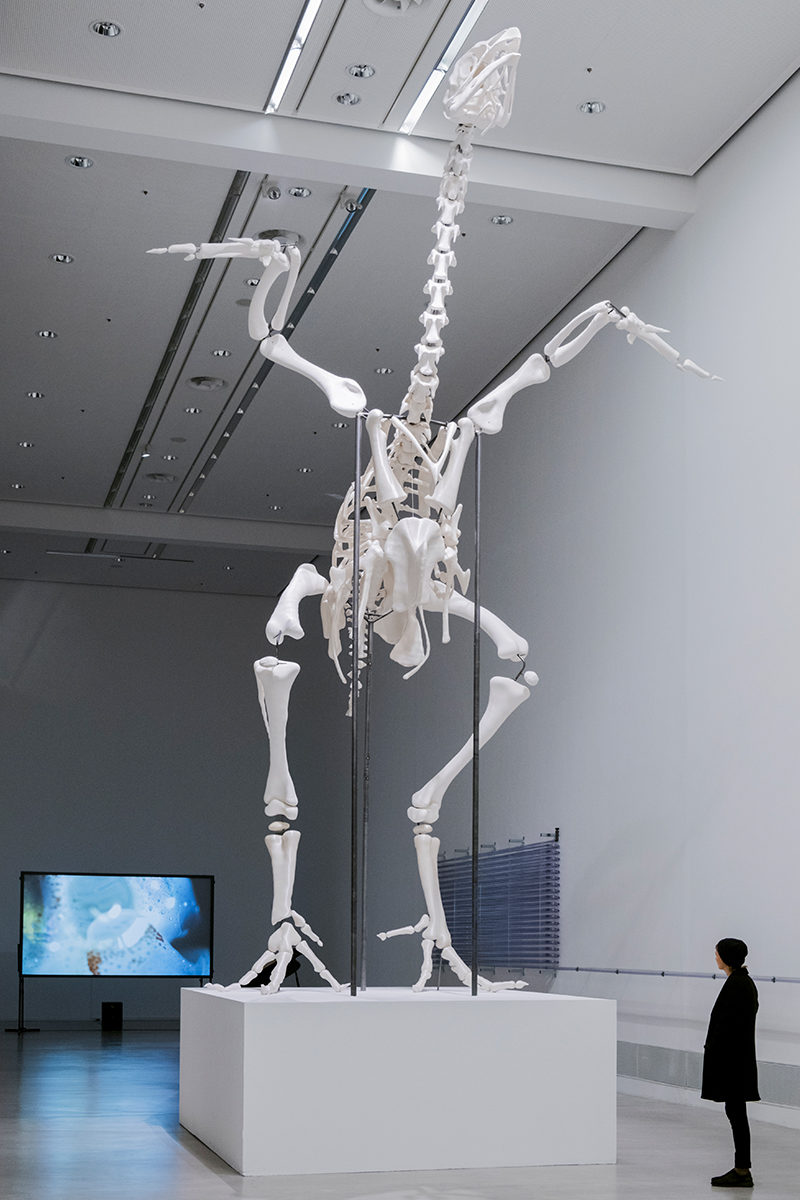
Andreas Greiner, Monument for the 308, 2016. Exhibition view of Andreas Greiner GASAG Kunstpreis 2016, Berlinische Galerie, 2016, Photo. Theo Bitzer
Monument for 308 shows that Greiner is comfortable working on the macro scale but he is also quietly building an impressive career engaging with the small (maggots, flies, algae, tiny crustaceans), and the very very small (microbes of all sorts.) Greiner works with living organisms (including himself when he decided to spend a week inside a gallery in the sole company of a few insects and plants), enrolling them as both subjects of careful reflection and as collaborators. His previous projects involved buying 40 litres of maggots and bringing them to the exhibition space until they turn into flies, composing music based on the luminous skin of a squid, convincing the Director of the Neue Nationalgalerie in Berlin to consider a fly as a living artwork and provide for its well-being, photographing portraits of algae, carefully orchestrating explosions around Berlin, etc.
The young artist recently received the GASAG Art Prize, a recognition awarded to Berlin-based artists whose work dialogues with technology and science. I caught up with him to discuss chicken, bacterial maps and the perils of working with maggots:
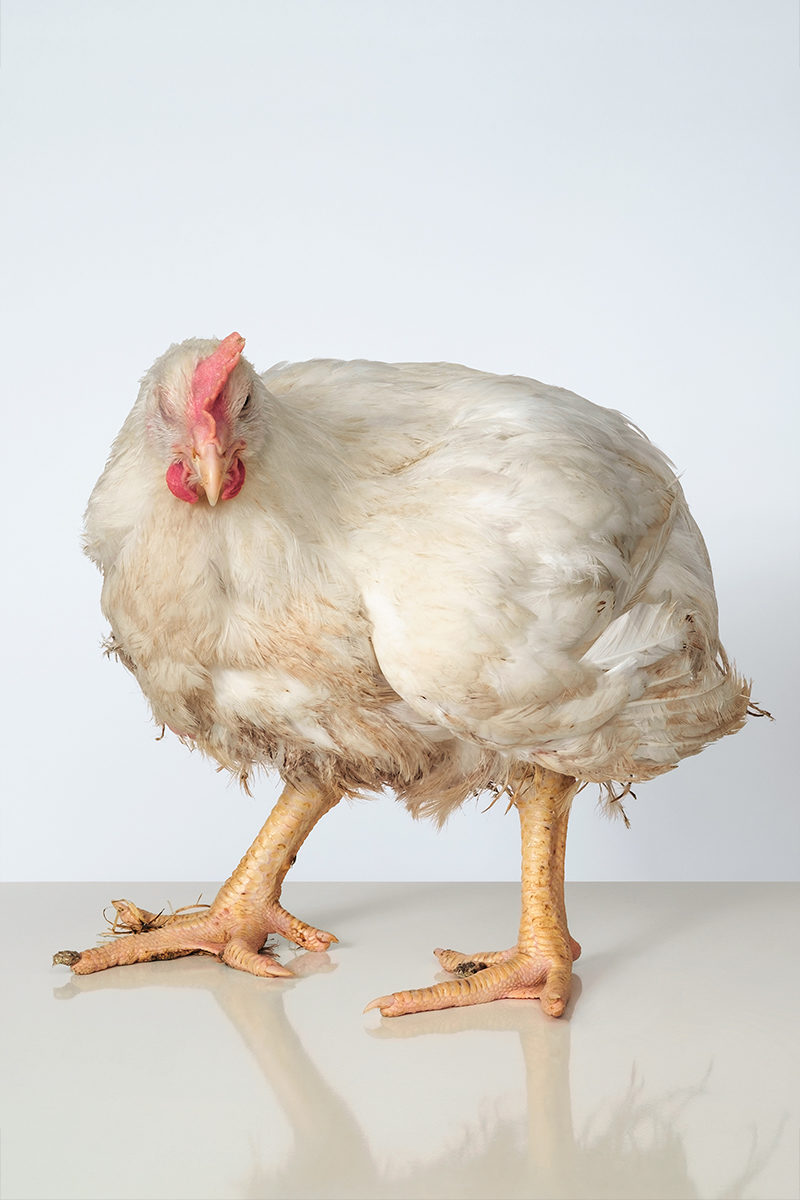
Heinrich, Totus Corpus – full Body Portrait of a broiler, 2015, Photo: Theo Bitzer & Andreas Greiner
Hi Andreas! I find your chicken projects very moving. But then i’ve always had a soft spot for animals. Which kind of response and reflection do you hope to elicit with works like Monument for the 308 and Heinrich (poor poor little battery chickens)?
I’m not necessarily looking to provoke pity for Heinrich, the broiler chicken. How a person reacts to my works is of course not in my control, however I would like the viewer to reflect upon the issue. We create these animals for the sole purpose of our eating habits, this is a species, which would not exist like this were it not for humans intervention into their breeding behaviour and anatomy. Heinrich is a metaphor, he represents our contemporary age in which humans are the driving creative and destructive force on planet earth. If dinosaurs are a relic from the Mesozoic Era, broiler chicken would be a “monument” of now.
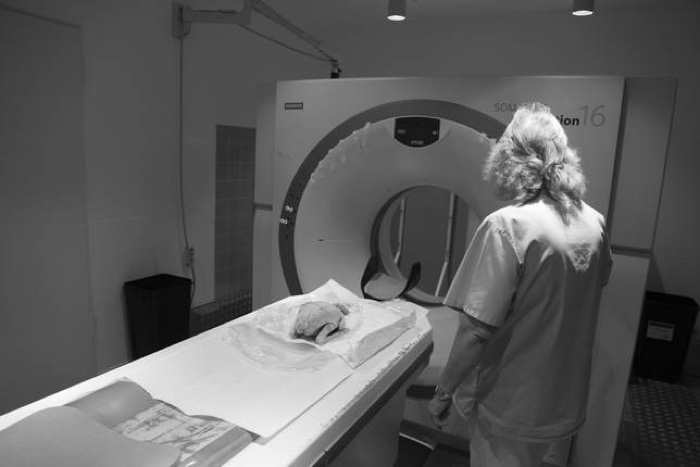
Andreas Greiner, fattened chicken Éléonore before CT scan in Berlin, 2015
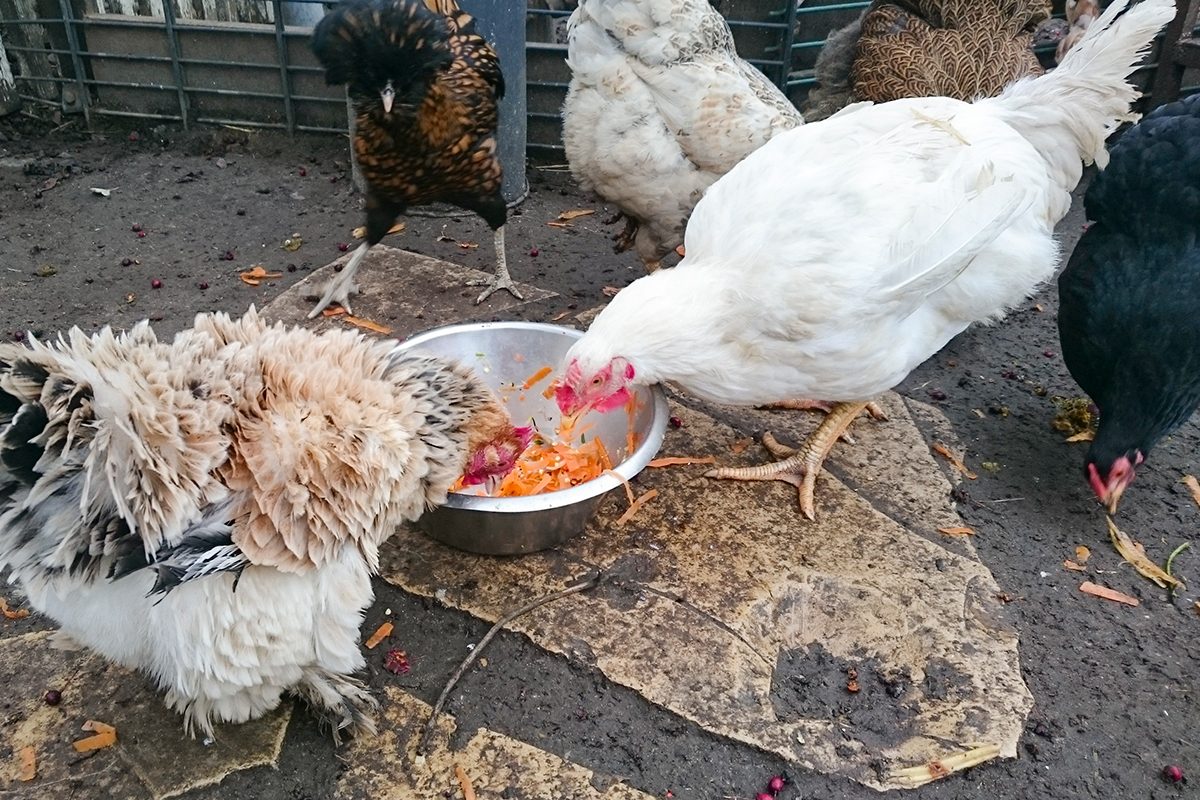
Heinrich at the petting zoo in Berlin Tempelhof, 2015
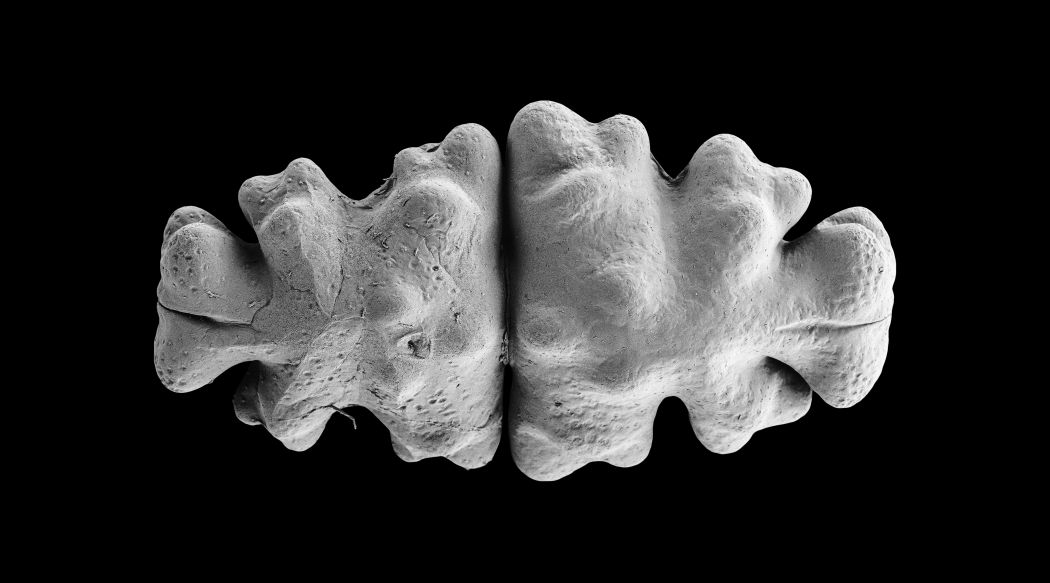
Andreas Greiner, Ulrike (Euastrum oblongum) Electron scanning micrograph 2016 measurement: Andreas Greiner and Martina Heider, Bayerisches Polymerinstitut, University Bayreuth
After Heinrich died, his body underwent an autopsy. What did you learn from it?
Heinrich died a few months after I handed him over to a petting zoo. The autopsy found that he most likely died from a heart attack, probably because his body was just too heavy.
I found the description of the works on your website to be fairly neutral and factual but i couldn’t help wonder whether these works were trying to make a point about animal welfare, man-made forms of nature, the food industry or maybe even veganism?
They are pointing to all of those and more. Certainly they also reflect my personal view. There is a general disregard for certain animals, which we view as an objective mass – matter to be exploited to fit our needs. My works show this, but I chose to only have short, factual descriptions like for example the documentations on my website. The reception should stay open for individual interpretation. By dealing with issues such as factory farming, genetic manipulation or the identity of animals, of course, the viewer makes their own conclusions in the end.
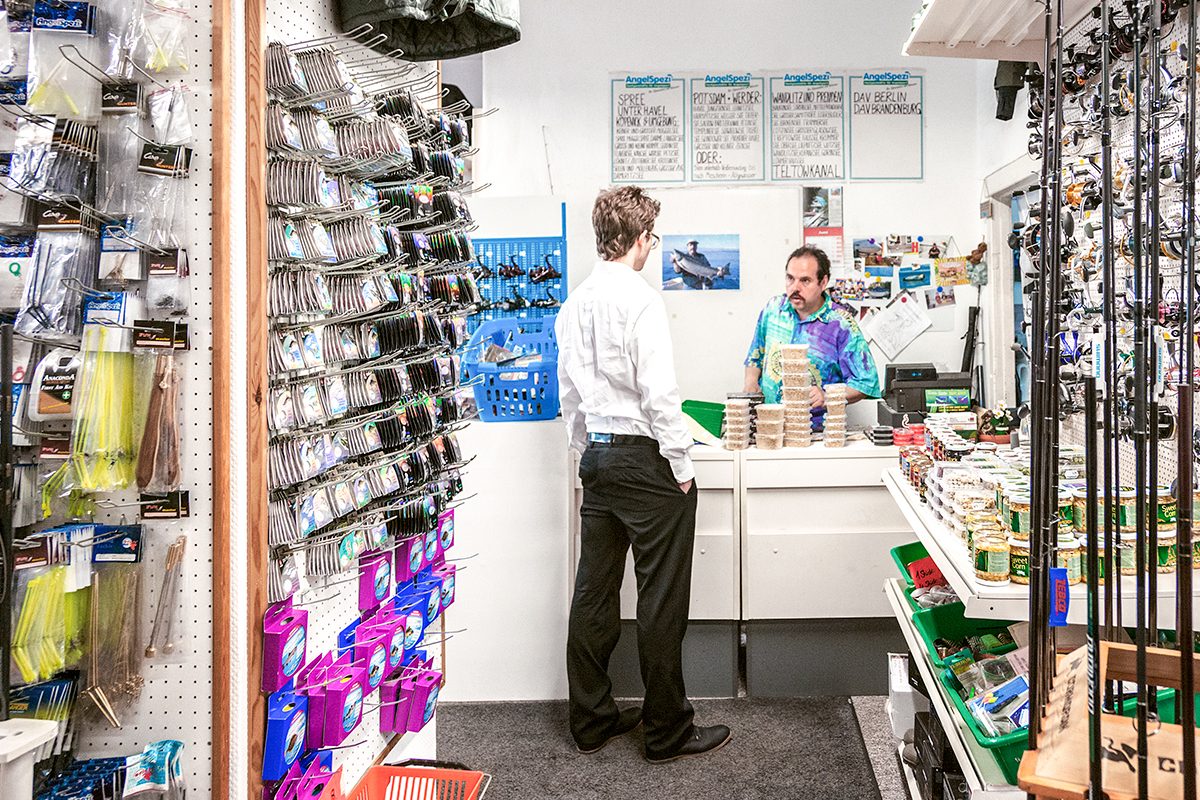
Andreas Greiner, Every Fly is a Piece of Art, University of the Arts, Berlin, 2012
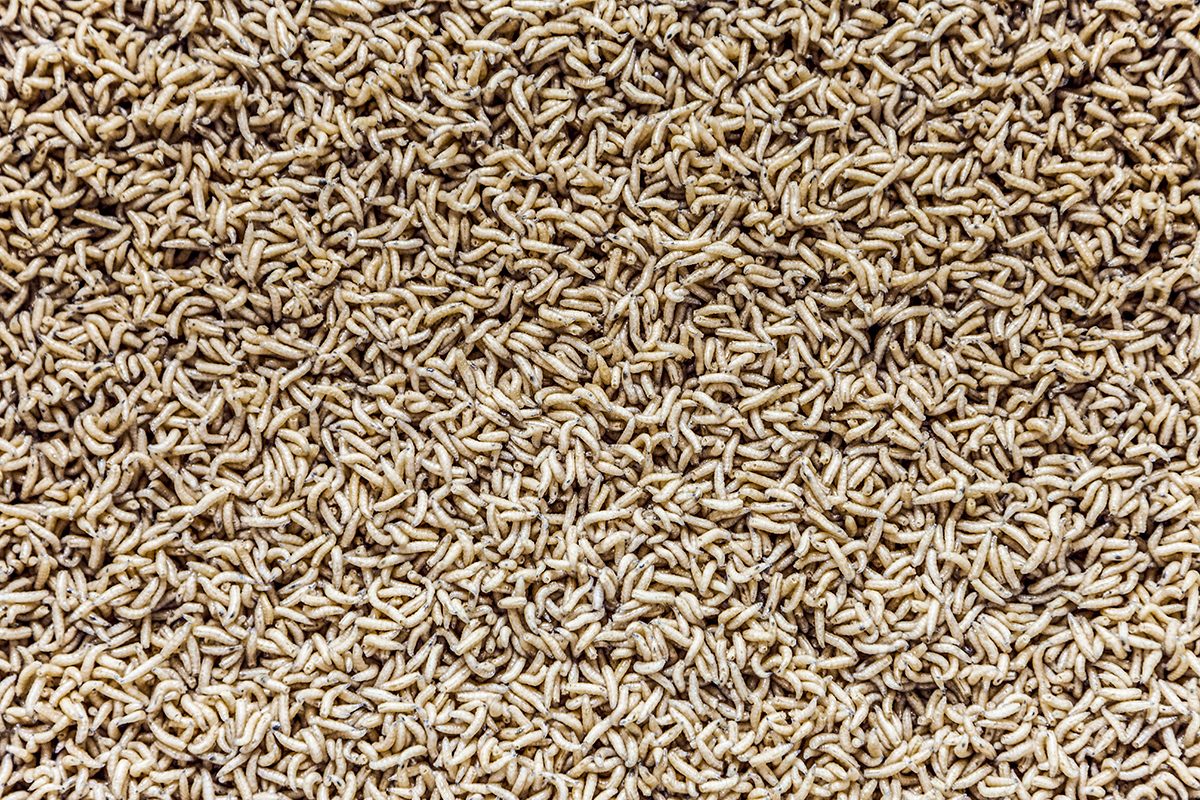
Andreas Greiner, Every Fly is a Piece of Art, University of the Arts, Berlin, 2012
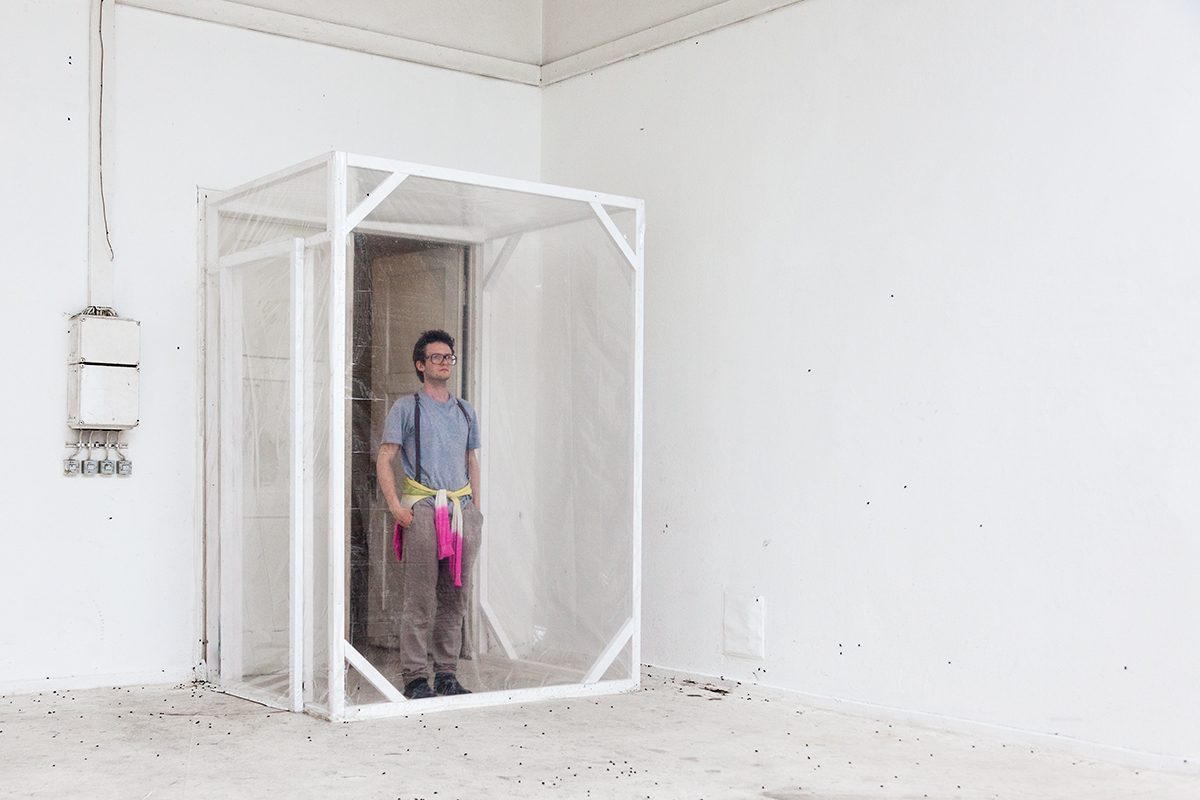
Andreas Greiner, Every Fly is a Piece of Art, University of the Arts, Berlin, 2012
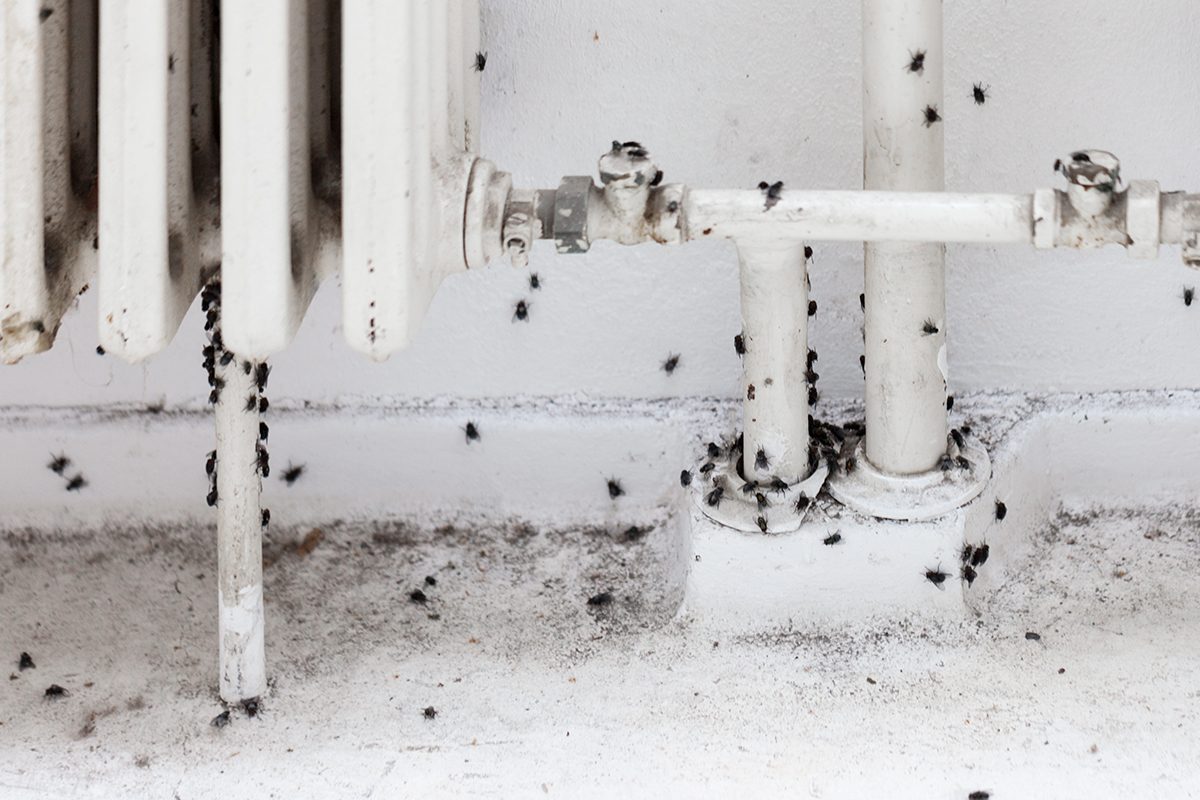
Andreas Greiner, Every Fly is a Piece of Art, University of the Arts, Berlin, 2012
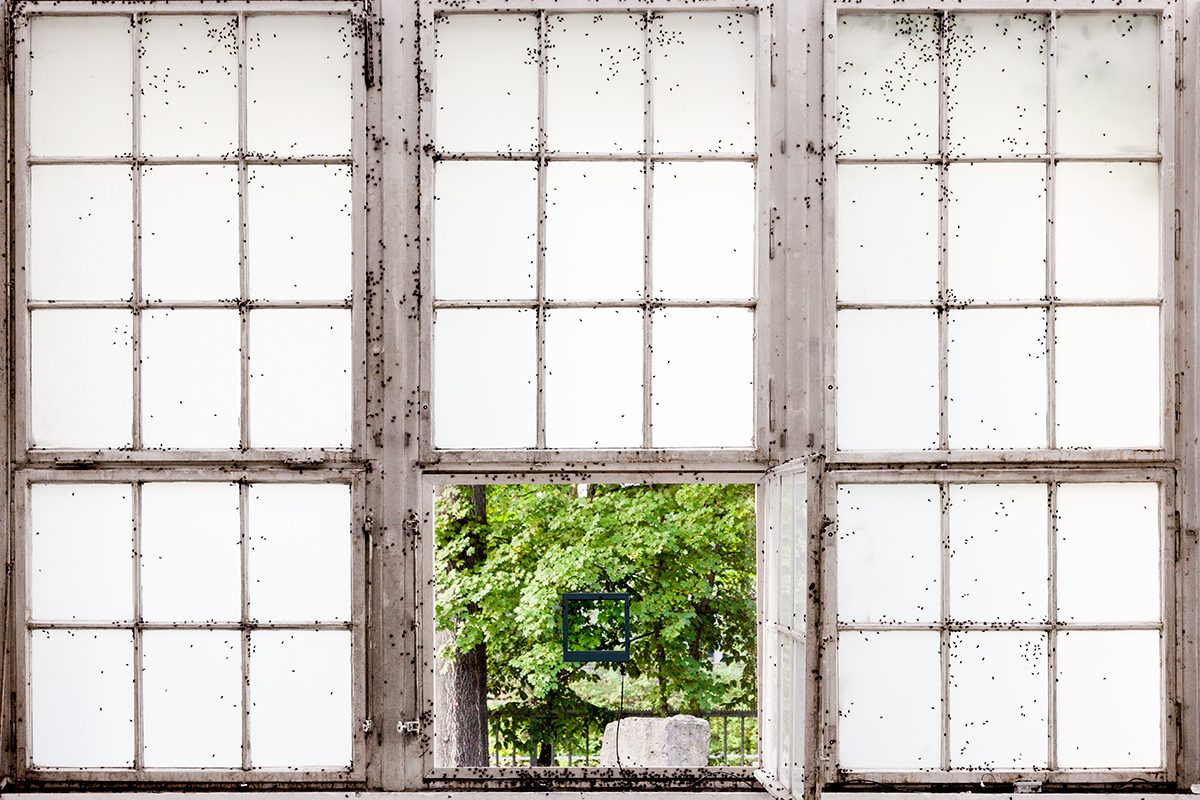
Andreas Greiner, Every Fly is a Piece of Art, University of the Arts, Berlin, 2012
I was feeling less sorry for the maggots then flies in the work Every Fly is a Piece of Art. I’m wondering how the whole adventure unfolded though. Did you really manage to buy all available fly maggots in Berlin and did you manage to control the flies and channel them through the exit as you had hoped? It sounds to me like a wild project where so many elements can take a direction that wasn’t expected…
Yes, it was slightly chaotic. I conceived this work for the final exhibition of my masters at the University of the Arts in Berlin. Back in 2012 with a students budget it was impossible to buy all the flies in Berlin. I visited every fisherman shop that sells maggots though and bought a huge amount of their maggots in stock. Most of the salesmen were afraid to loose their clients if they sold all of their maggots to me in order to really buy all oft them I would have had to bribe the salesmen.
In the exhibition they started hatching and flying about. All the painting students of the other studios were mad at me because the flies landed on their freshly painted surfaces. They reacted by constructing fly traps, which turned my intentions around completely. I actually had to end the project earlier than the official end of the master class exhibition – at least half of the flies (about 100 000) hatched outside in nature. After this experience, I decided to only work with a few flies or one fly at a time because this is more foreseeable.
Your practice seems to be an interesting mix of collaboration with scientists and other experts along with processes that make control over the final artworks a bit difficult. How important is it for you to be in control (or rather maybe not be in control) of the art piece you are developing?
I am interested in the processual aspects of sculpture and have integrated living organisms into many of my works. I call this co-authorship, as they co-create and transform the art work by the process of living. Uncontrollable biological processes are an integral part of the outcome of an art work.
By working with experts and scientists I am able to broaden and deepen my work by researching very specific topics and techniques. I am interested in an exchange between artistic and scientific knowledge.
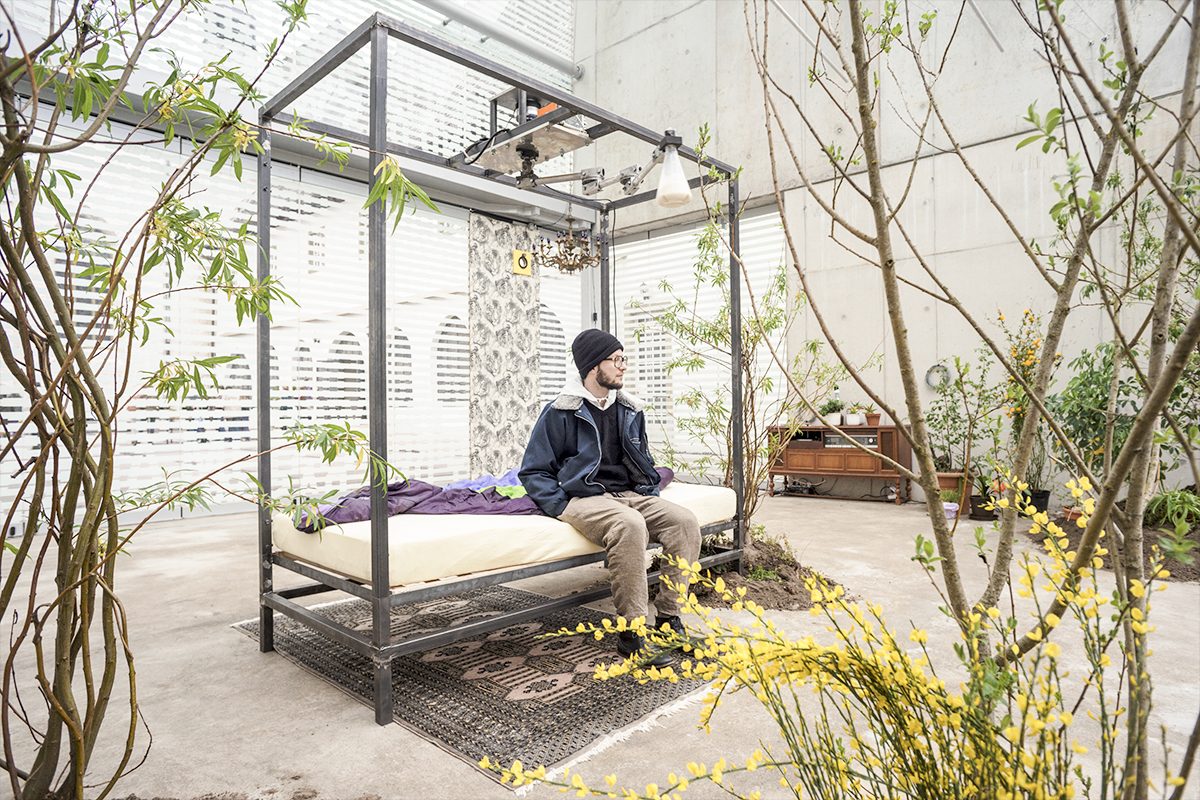
Andreas Greiner, Spring Forward Fall Back, Lichthaus, Kunstverein Arnsberg, 2014. Photo: Vlado Velkov
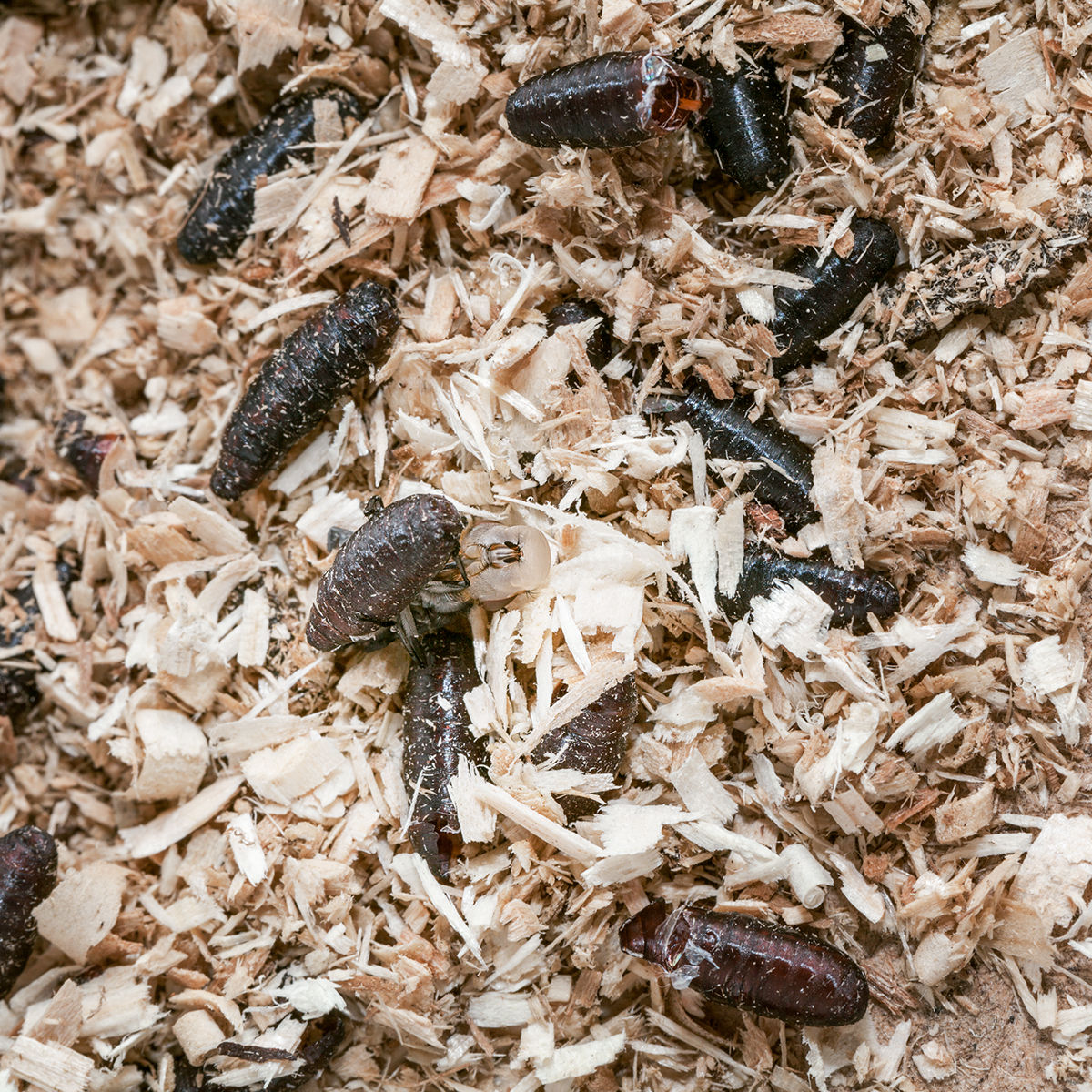
Andreas Greiner, Spring Forward Fall Back, Lichthaus, Kunstverein Arnsberg, 2014. Photo: Vlado Velkov
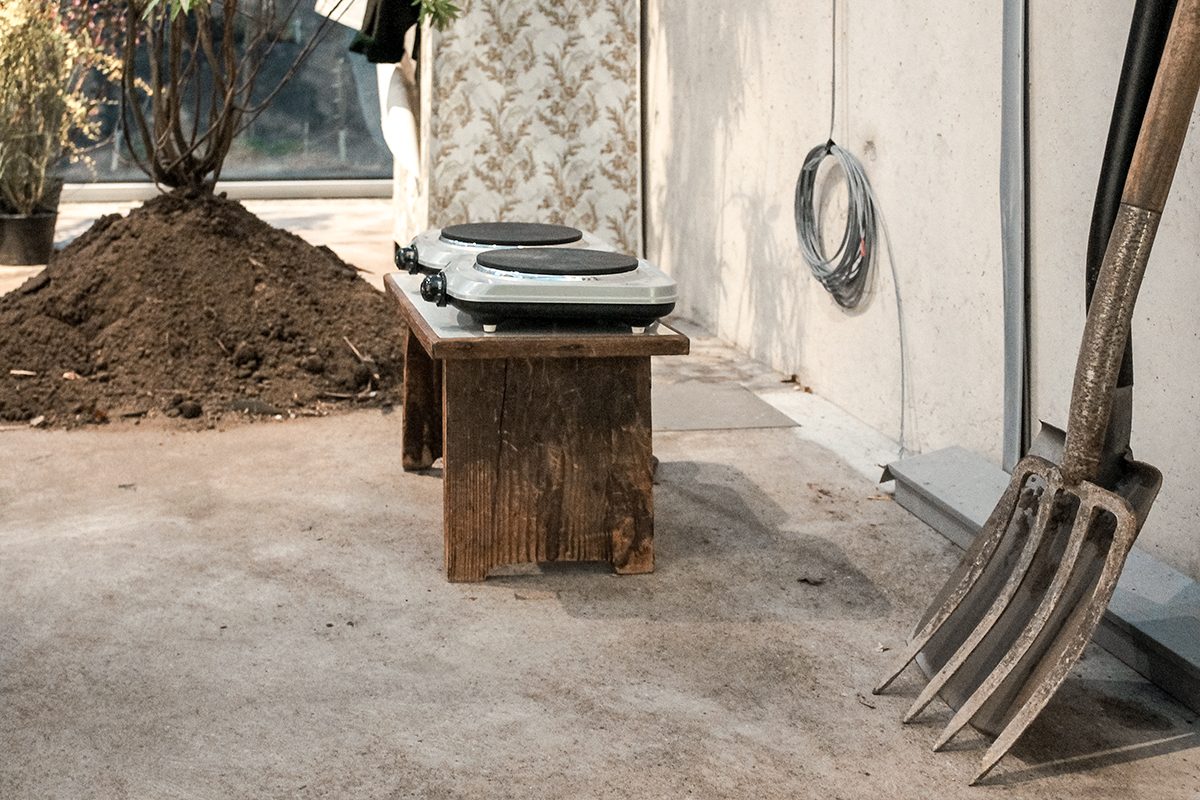
Andreas Greiner, Spring Forward Fall Back, Lichthaus, Kunstverein Arnsberg, 2014. Photo: Vlado Velkov
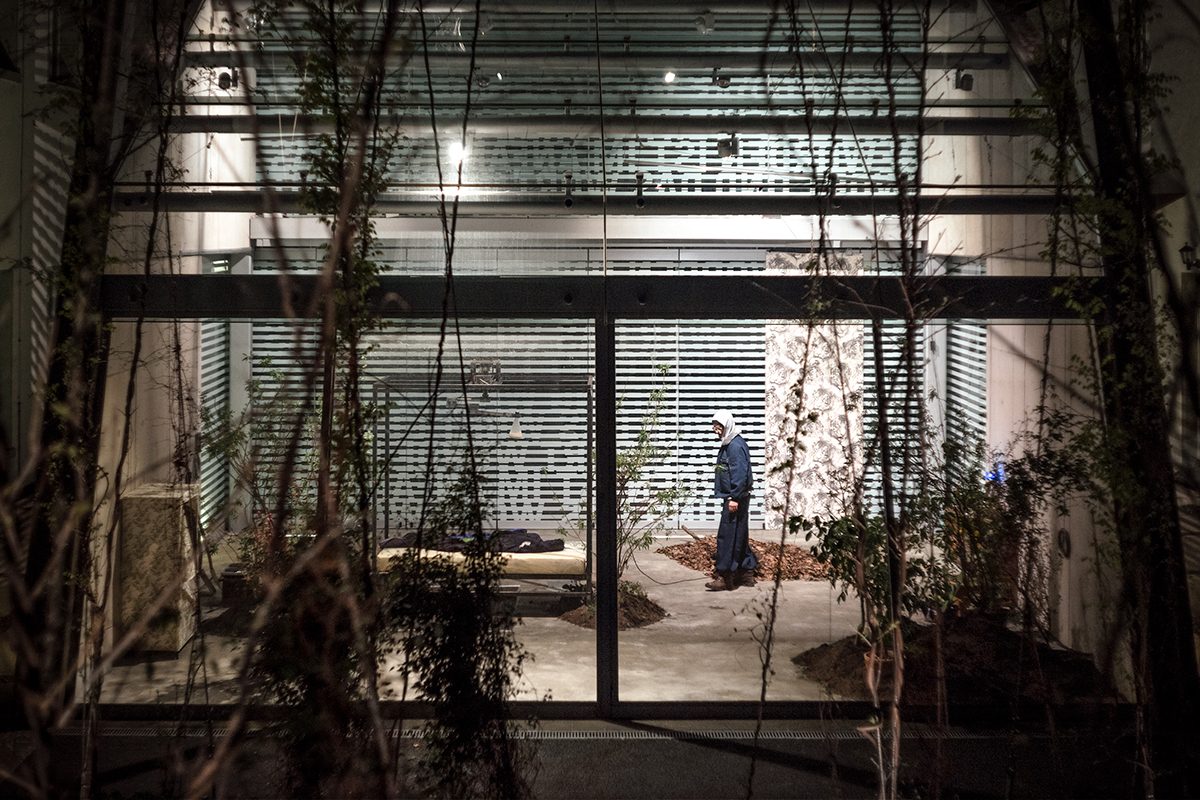
Andreas Greiner, Spring Forward Fall Back, Lichthaus, Kunstverein Arnsberg, 2014. Photo: Vlado Velkov
I’m very curious about Spring Forward Fall Back and what you experienced during this cohabitation with an ecosystem you had created for you and for nature. What did you learn and observe during that week? How did the insects, plants and other living entities inhabit and modify the space over time?
I was invited by the Kunstverein Arnsberg for a show at the Lichthaus and decided to live in there for a week. It was an interesting experience. First of all I learnt, that spring in Arnsberg (in the Sauerland, Western Germany) starts later then in the rest of Germany. In the beginning there were few insects, for example a single bumblebee got lost, it moved very slowly because of the cold. I brought a female moth with me from Berlin and later she actually attracted a local male moth. Insect match-making. By the end of the exhibit an ant colony had settled and the population of my animal co-inhabitants and plants had multiplied 5 times.
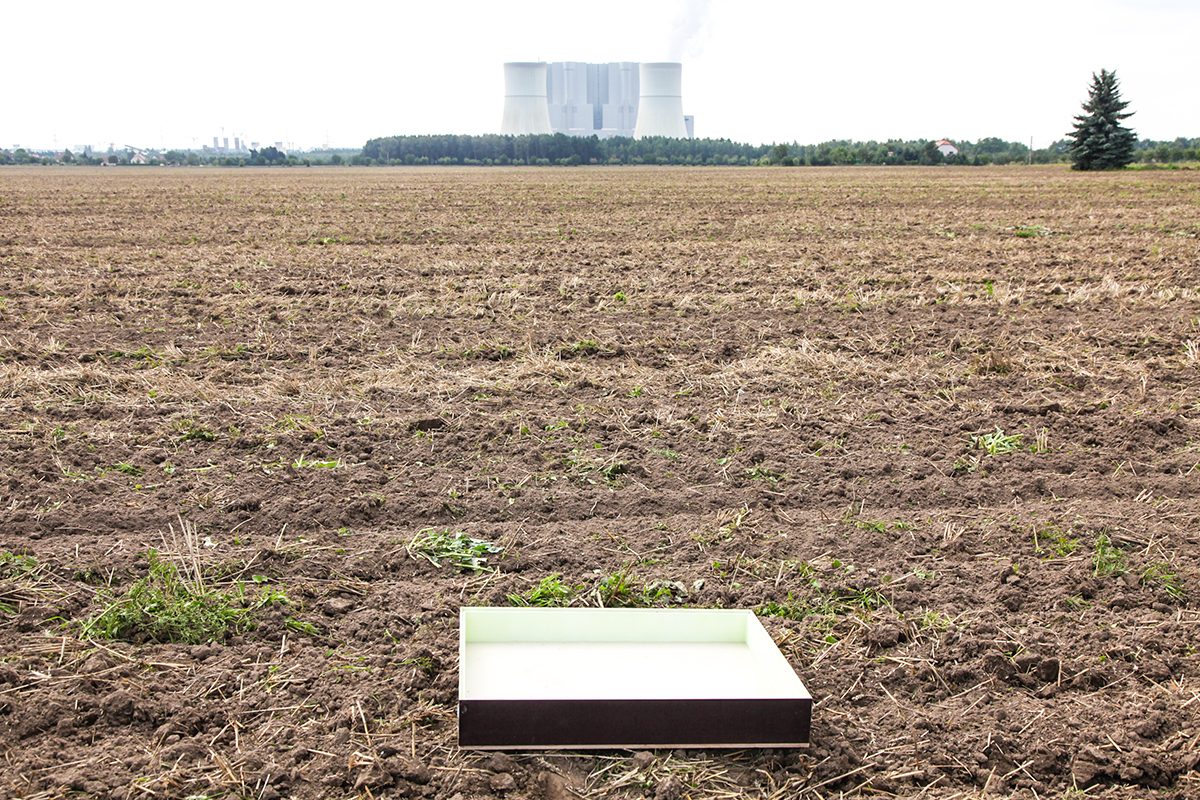
Andreas Greiner &, Julian Charrière, Dominions, 2011, collecting microbes at Schwarze Pumpe, Brandenburg
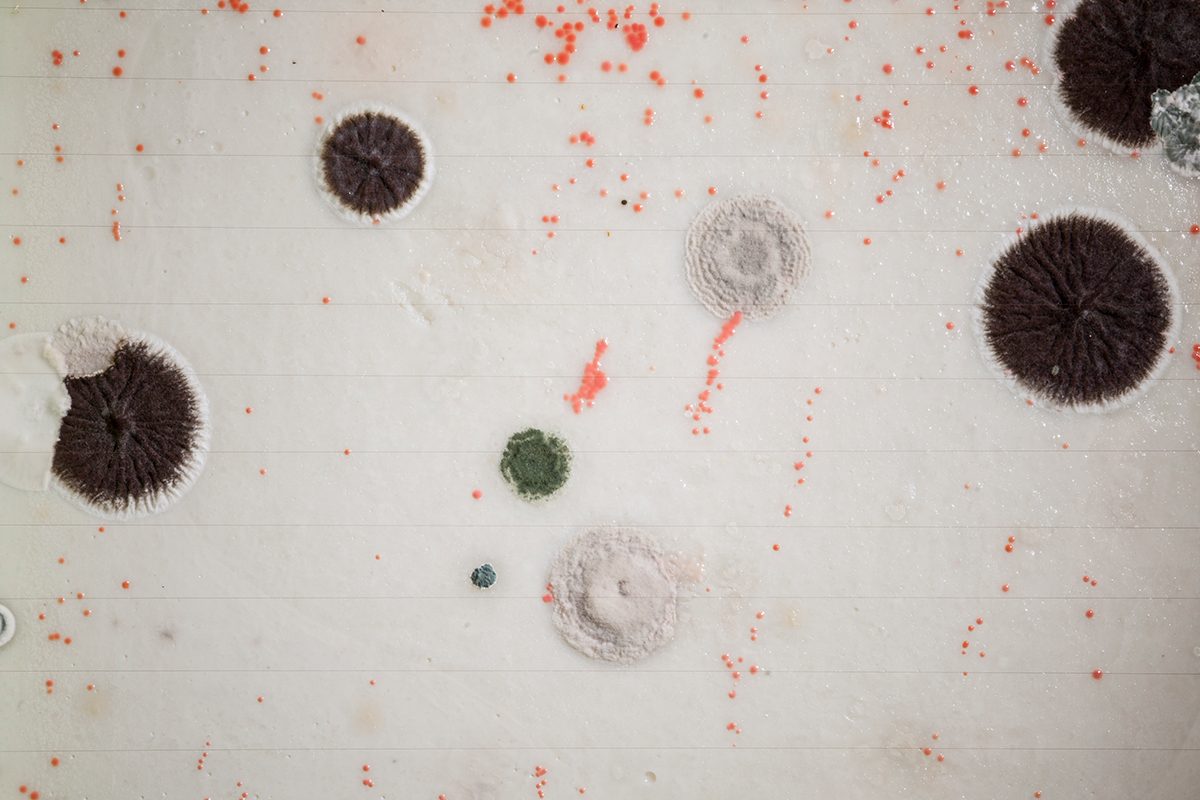
Andreas Greiner &, Julian Charrière, Dominions, 2011, example of an expressed growth pattern by microbes
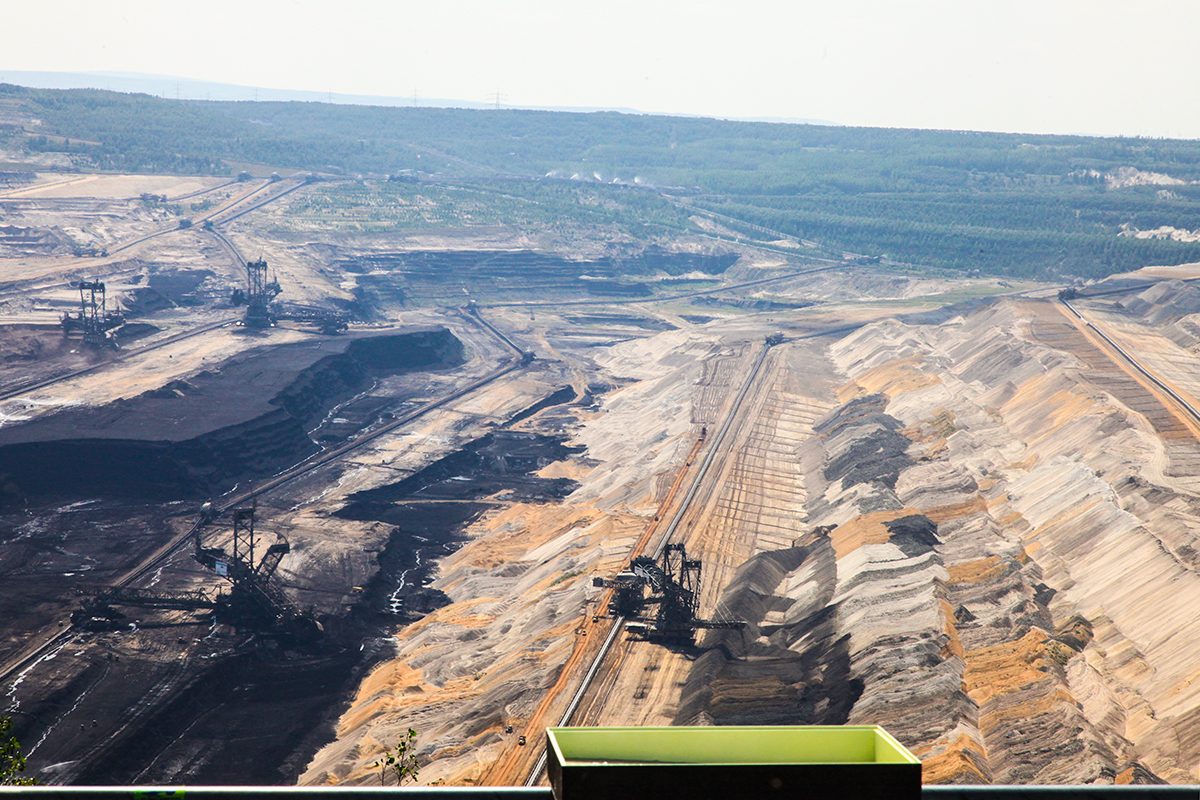
Andreas Greiner &, Julian Charrière, Dominions, 2011, collecting microbes at Elsdorf, Brandenburg, Nordrhein-Westfalen
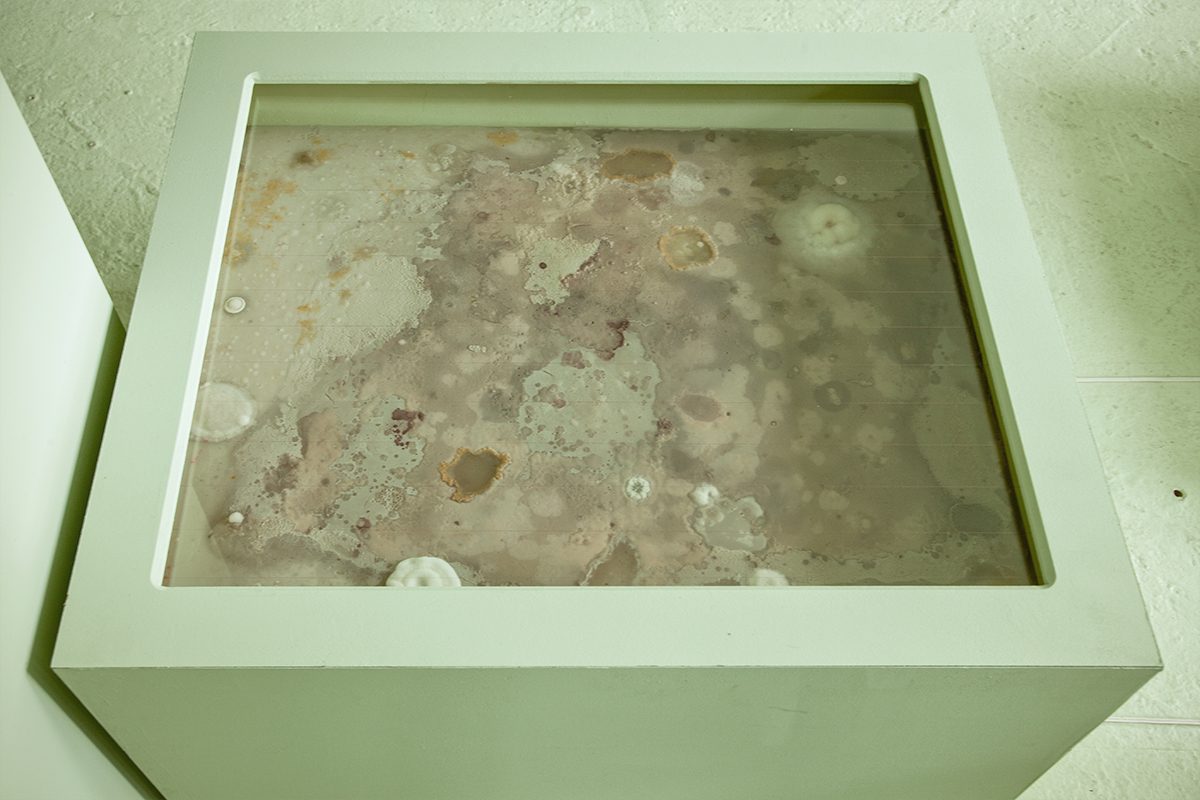
Andreas Greiner &, Julian Charrière, Dominions, 2011, exhibition view
In Dominions you created bacterial maps of Germany and Switzerland. From the photos and videos on the project page, it seems that you collected the microbes from very specific and interesting looking locations. Could you tell us about these places and what guided your selection of them as well as of the selection of the microbes?
And what links the humble microbes with the title of the work, Dominions?
The project was a collaboration with Julian Charrière when we were still students at Olafur Eliasson‘s Institute for Spatial Experiments. We selected places in Germany and Switzerland. Some were biographically relevant (our birthplaces in Germany and Switzerland) and others were geographically important places, such as the highest mountain in Germany, the three border triangle between Germany, Belgium and the Netherlands, the eastern most point of Germany, etc. We brought sterile boxes filled with a plane layer of white culture medium for microgerms (comparable to an unexposed film or white canvas) and exposed them to the surroundings for 30min each. The collected bacteria and spores expressed different patterns and colours back in Berlin under vitrine glass.
By selecting germs from all these chosen places we reconstructed a map of Germany and Switzerland, which is not based on socio-political conventions, but defined by the microorganisms populating these areas. It’s a reference to landscape painting or photography – a snapshot of the non-perceiveable micro-landscape in the air. We humans assume to have over our landscapes with roads, cities and railways criss-crossing though the country. But it’s microorganisms, like algae and bacteria, which cover the earth and have dominion over it.
Speaking of humble lives, what is it that attracts you to the underdogs like microbes, algae, maggots, broiler chickens, etc?
One of the challenges of art is to visualize things: show things from a different perspective, or things that are generally not seen. There is a staggering mass of life that we humans never visually appreciate: industrial broiler chicken, deep-sea squids, algae which are too small to be visible, or insects, because we find them repulsive. I consider the way we interact with our surroundings very telling of our species and our times.
From Strings to Dinosaurs shown at the exhibition cycle “MULTITUDES”, curated by Anna Henckel and Nadim Samman, at Import Projects and Cycle Music and Art Festival, 2015
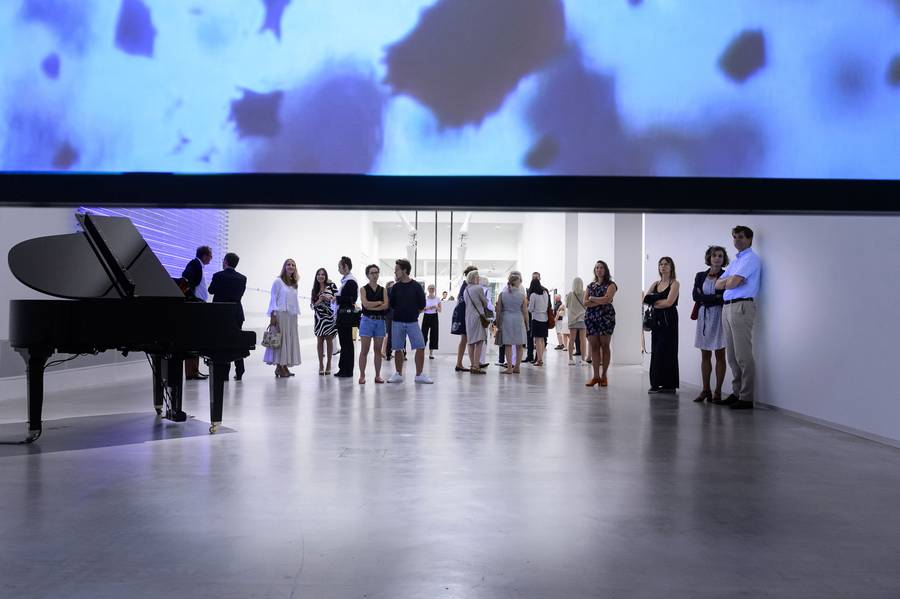
EExhibition view of “Andreas Greiner. Agentur des Exponenten. GASAG Kunstpreis 2016”, Berlinische Galerie, 2016. Photo: Harry Schnitger
Any upcoming project, field of research or event you could share with us?
This month, I have two exhibitions in Berlin: Golden Gate together with Armin Keplinger at Kwadrat and DAS NUMEN MEATUS at Dittrich and Schlechtriem. The finissage of my exhibition in the Berlinische Gallerie is on the 6th of February, where Tyler Friedman and I will show the work From Strings to Dinosaurs. The algae in the reactor will be placed on top of the self-playing piano and illuminate during the musical composition.
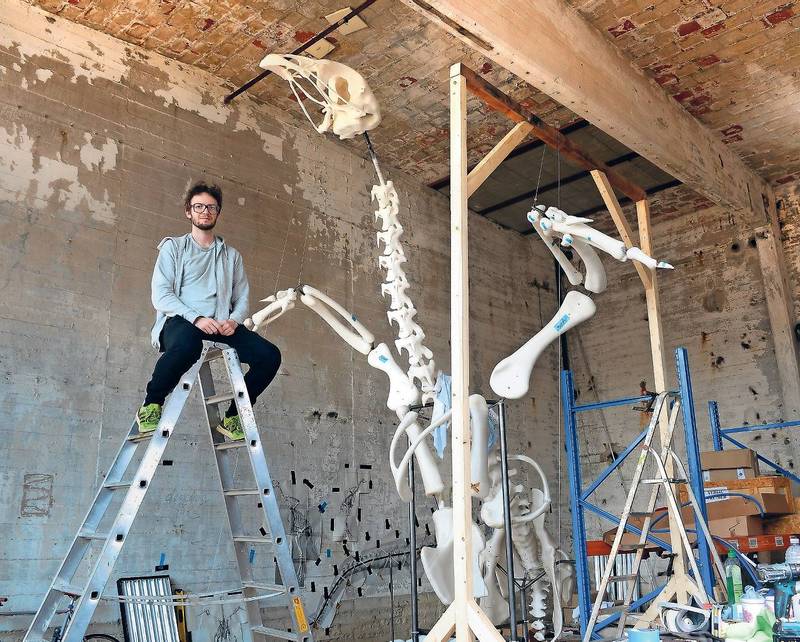
Artist Andreas Greiner in his Berlin workshop. Photo: Mike Wolff in Der Tagesspiegel
Thanks Andreas!

